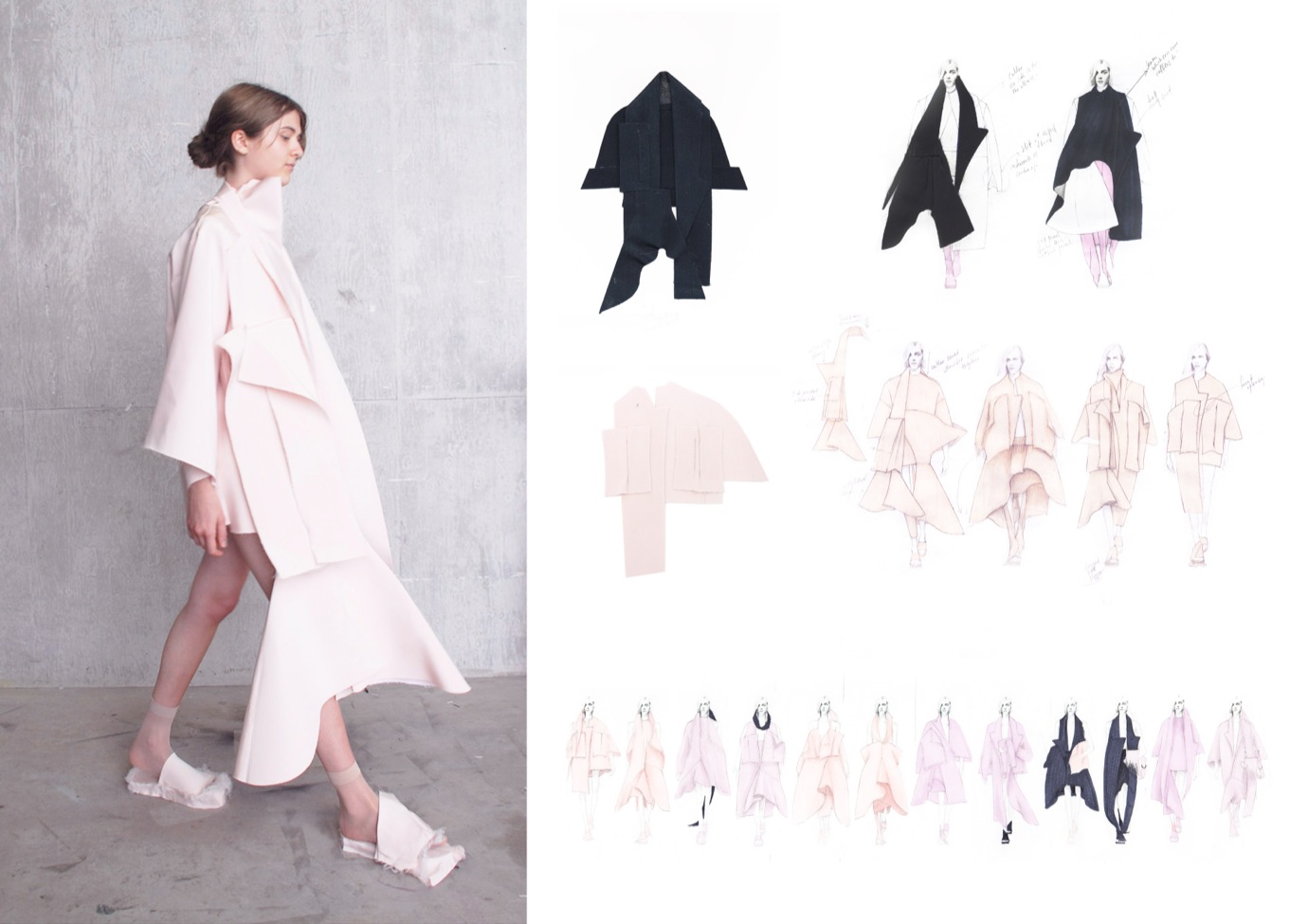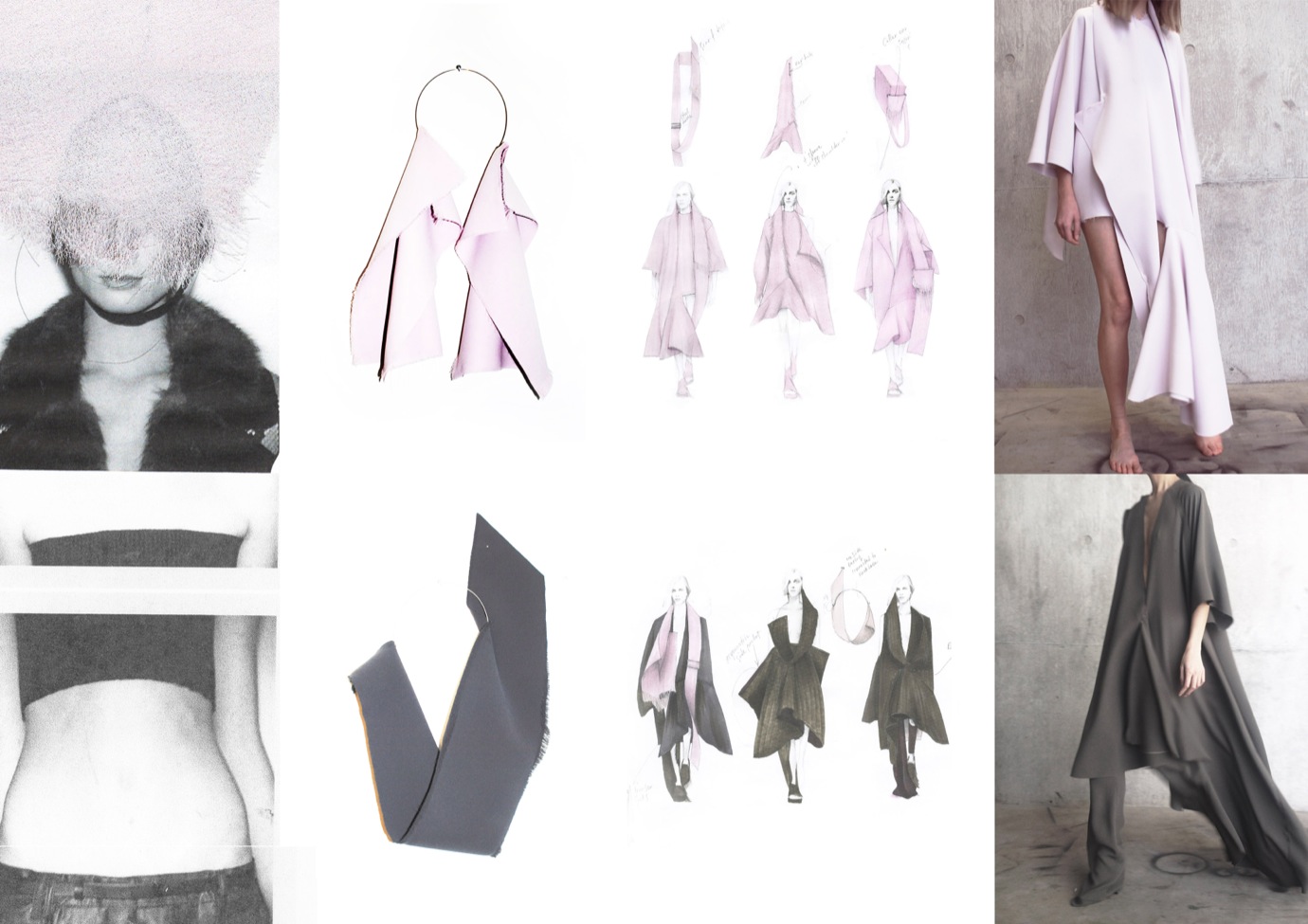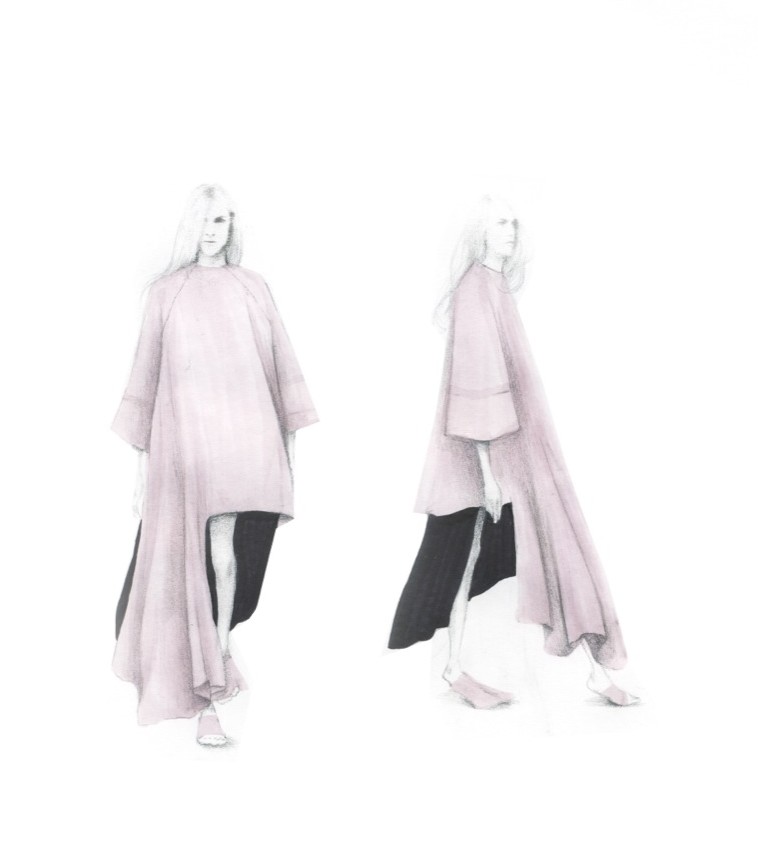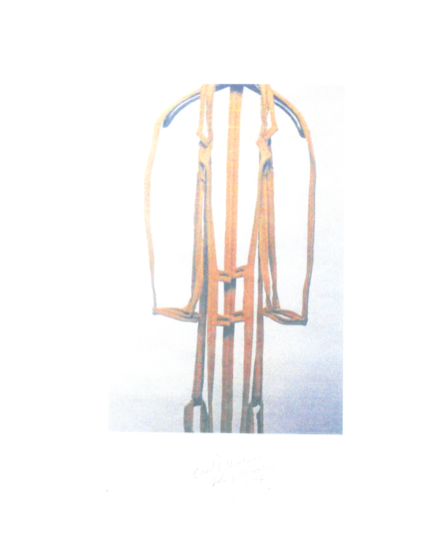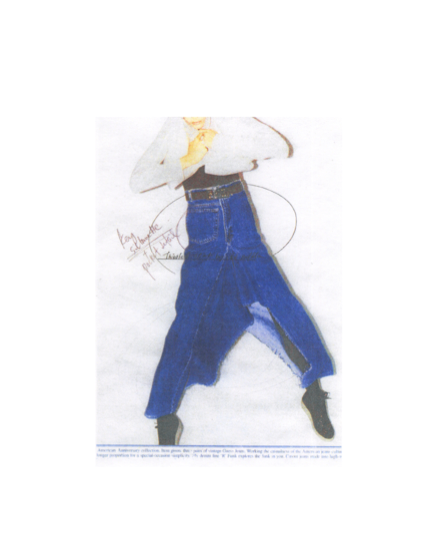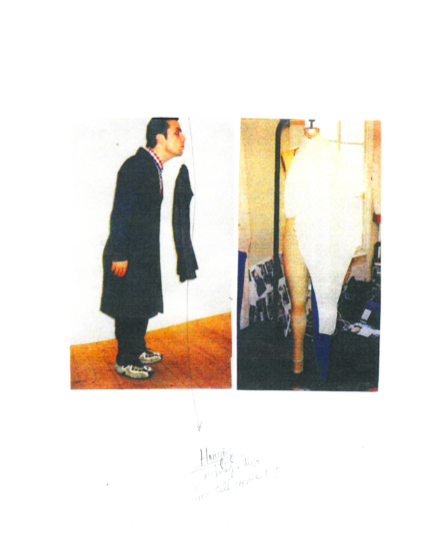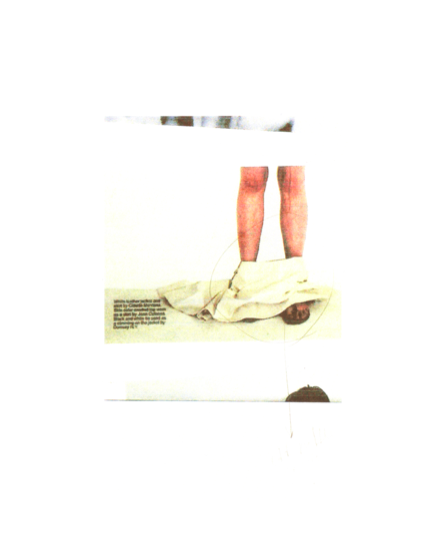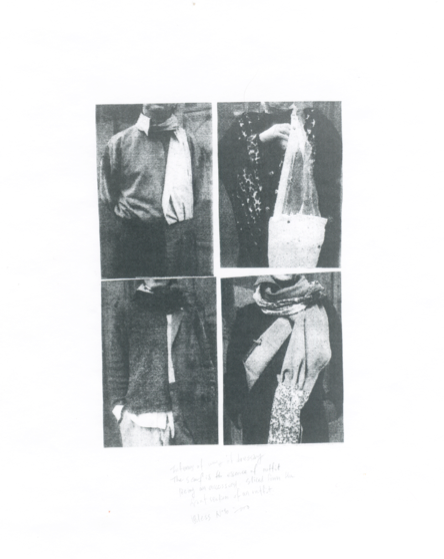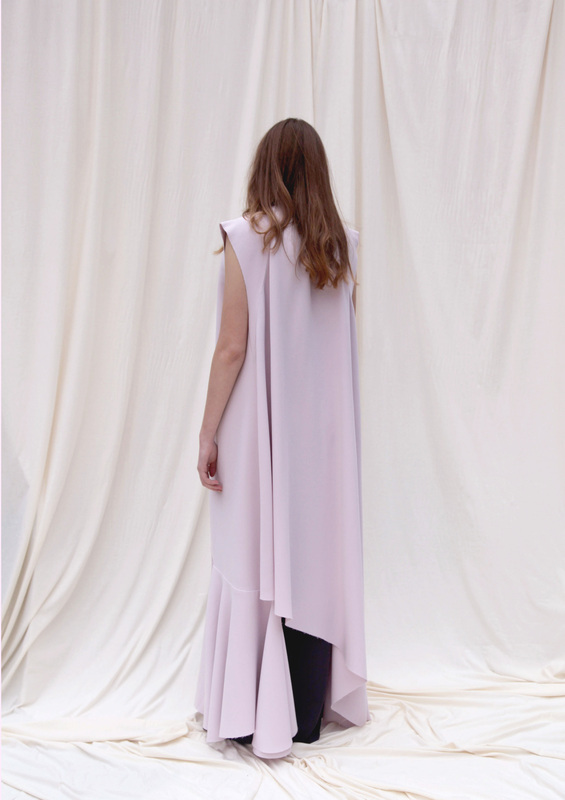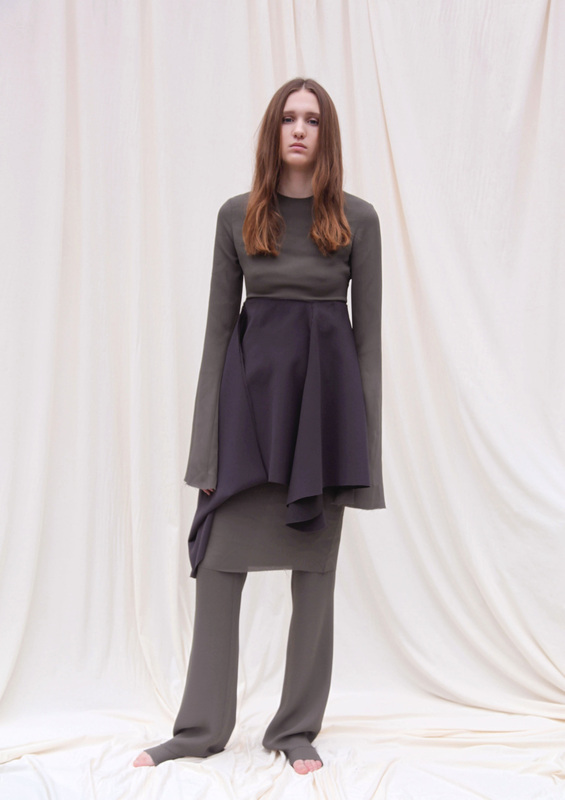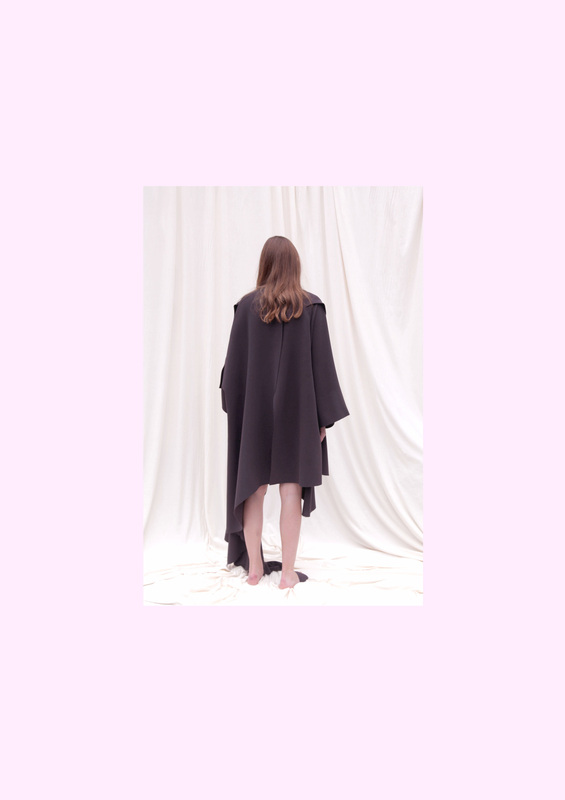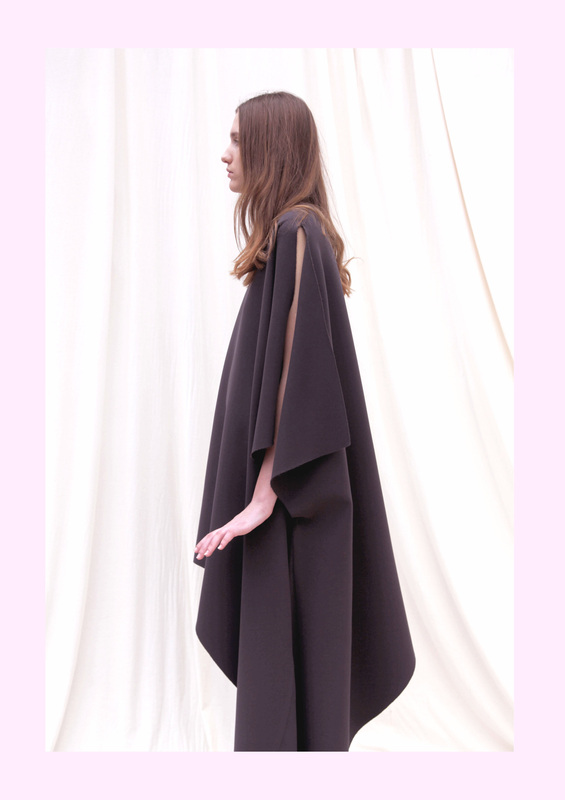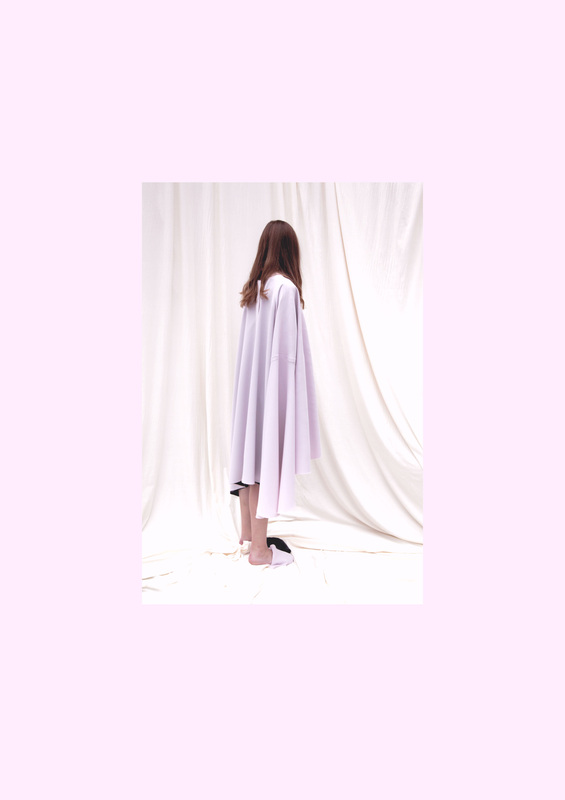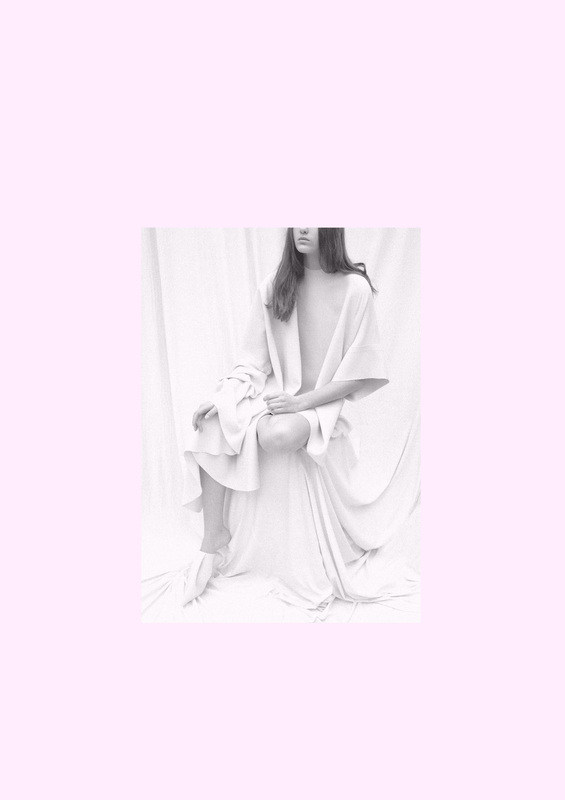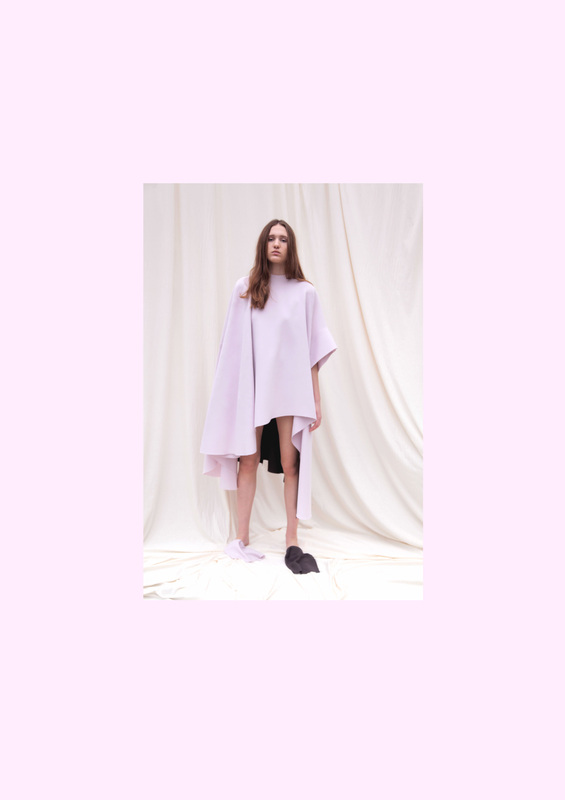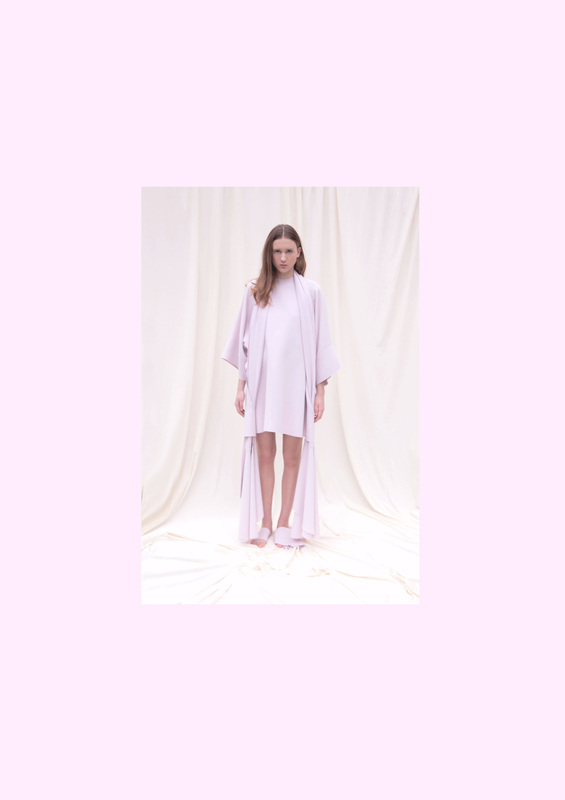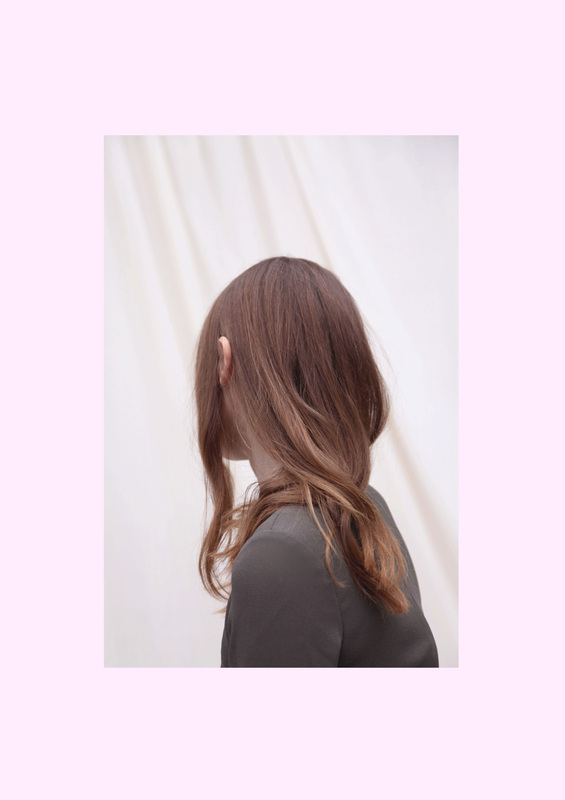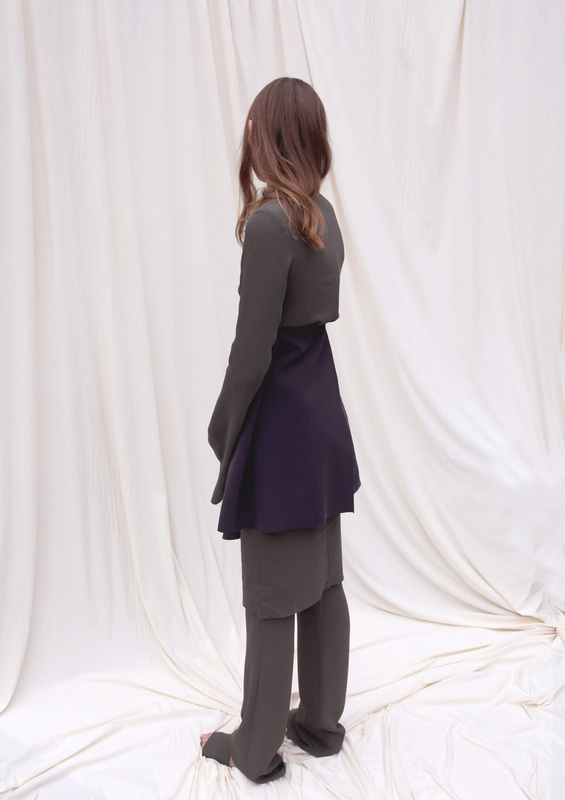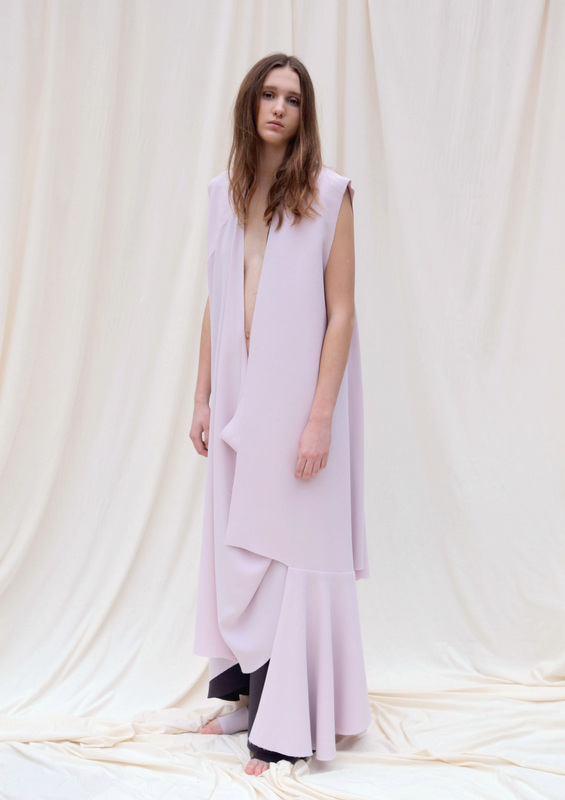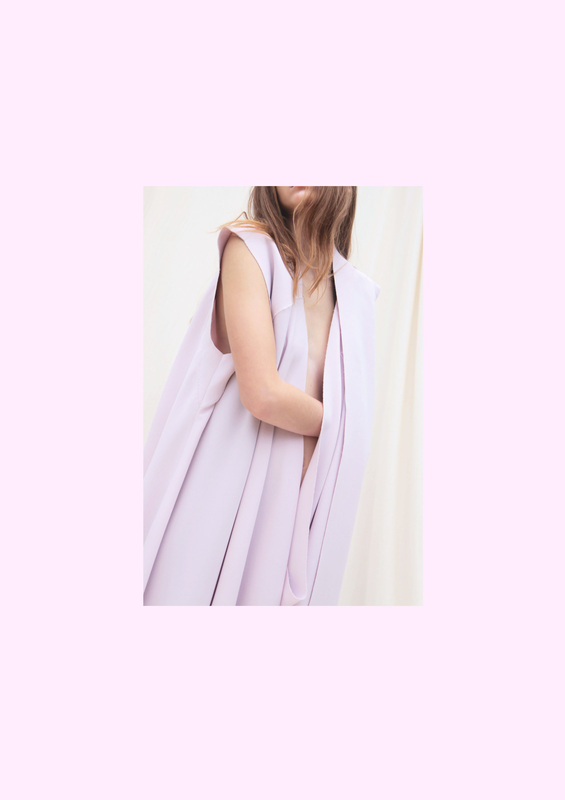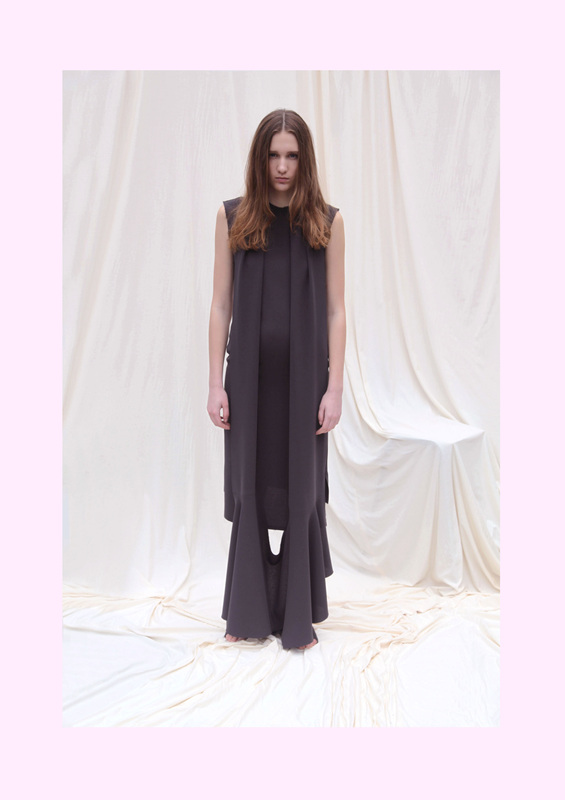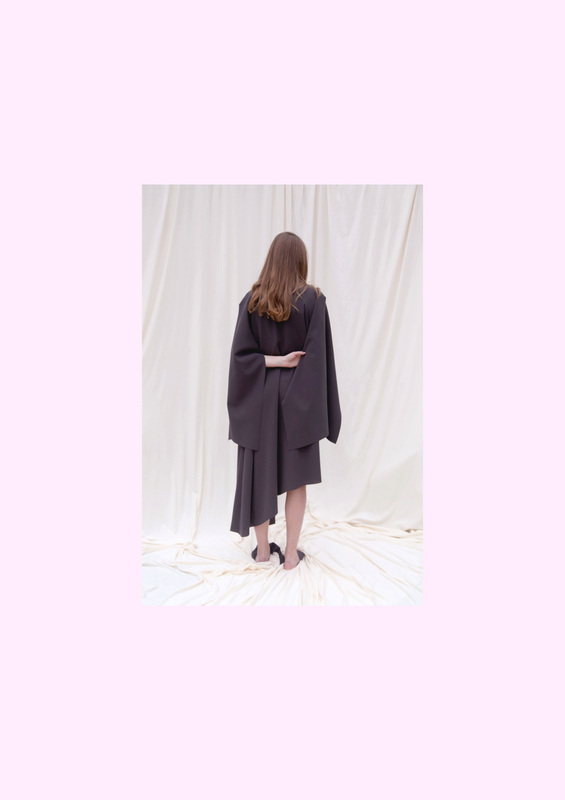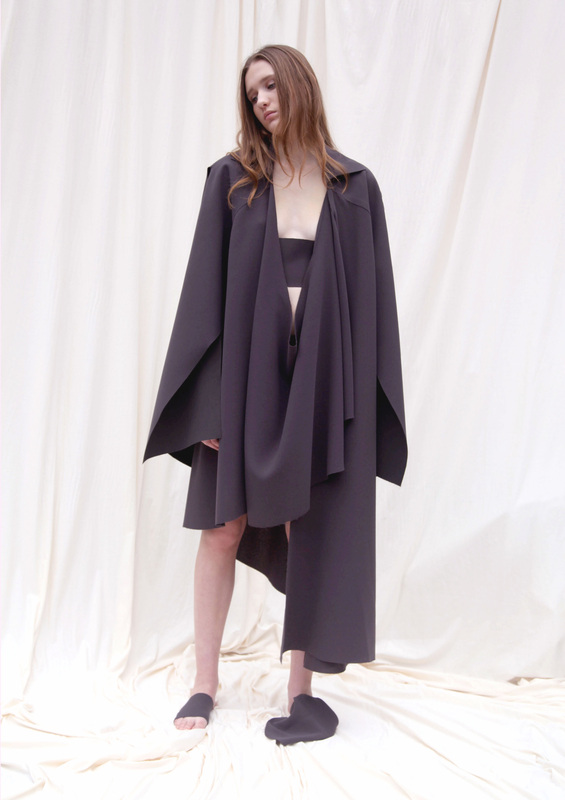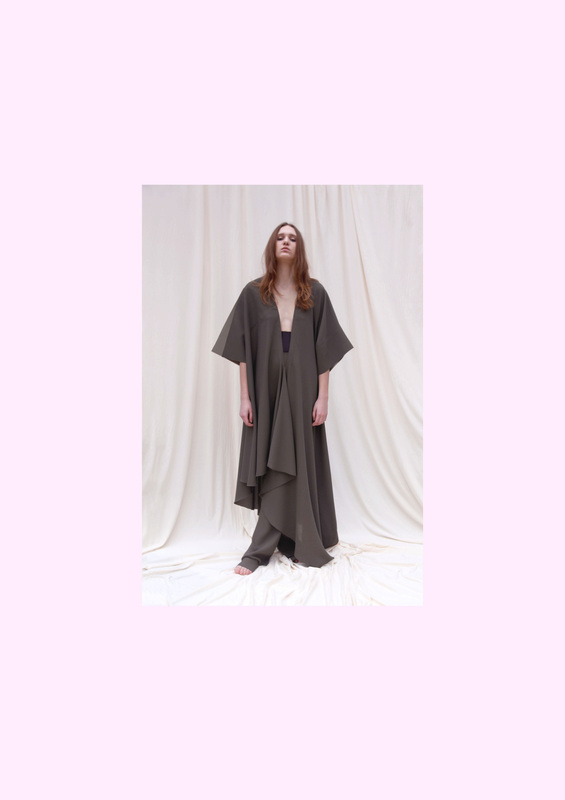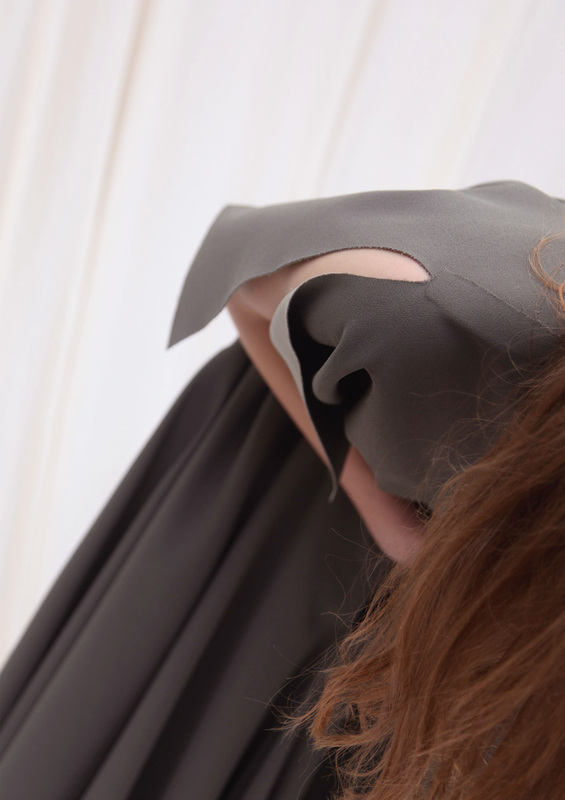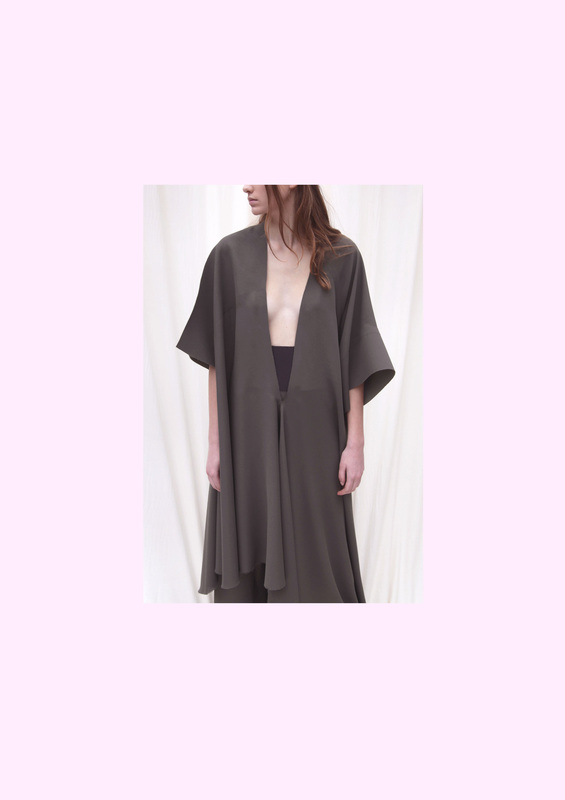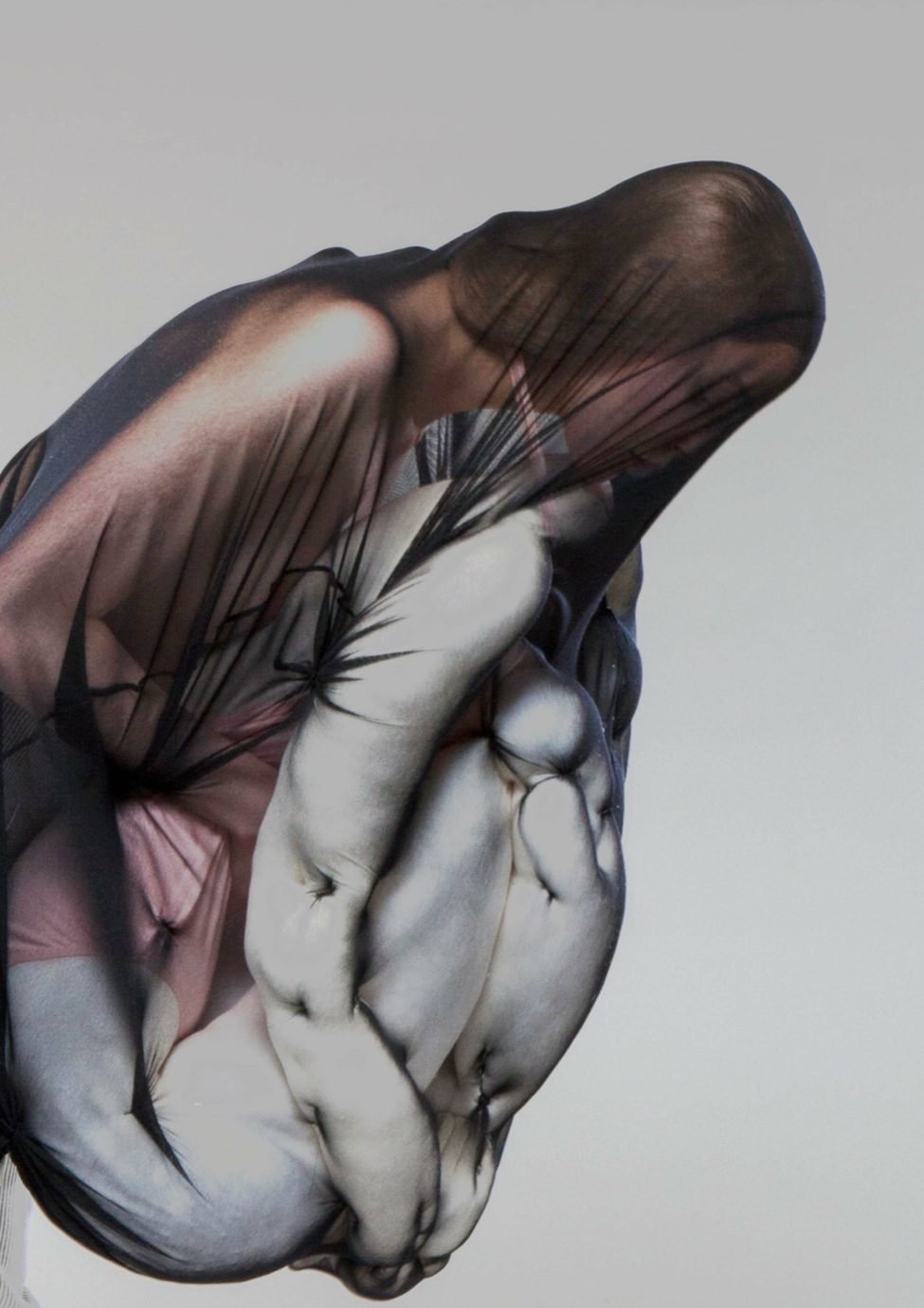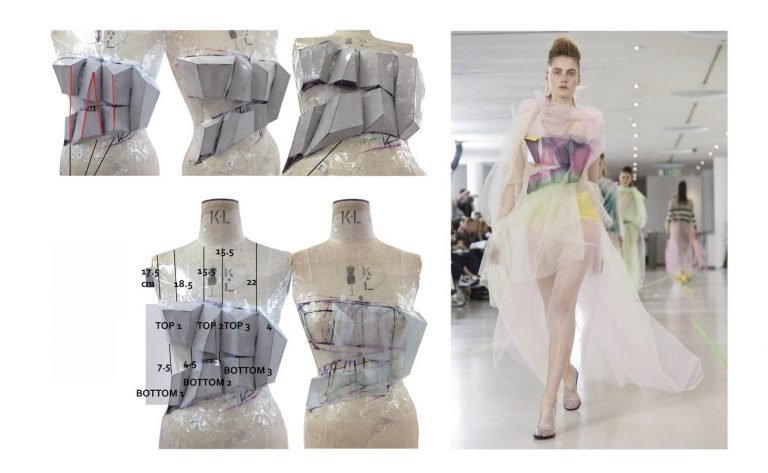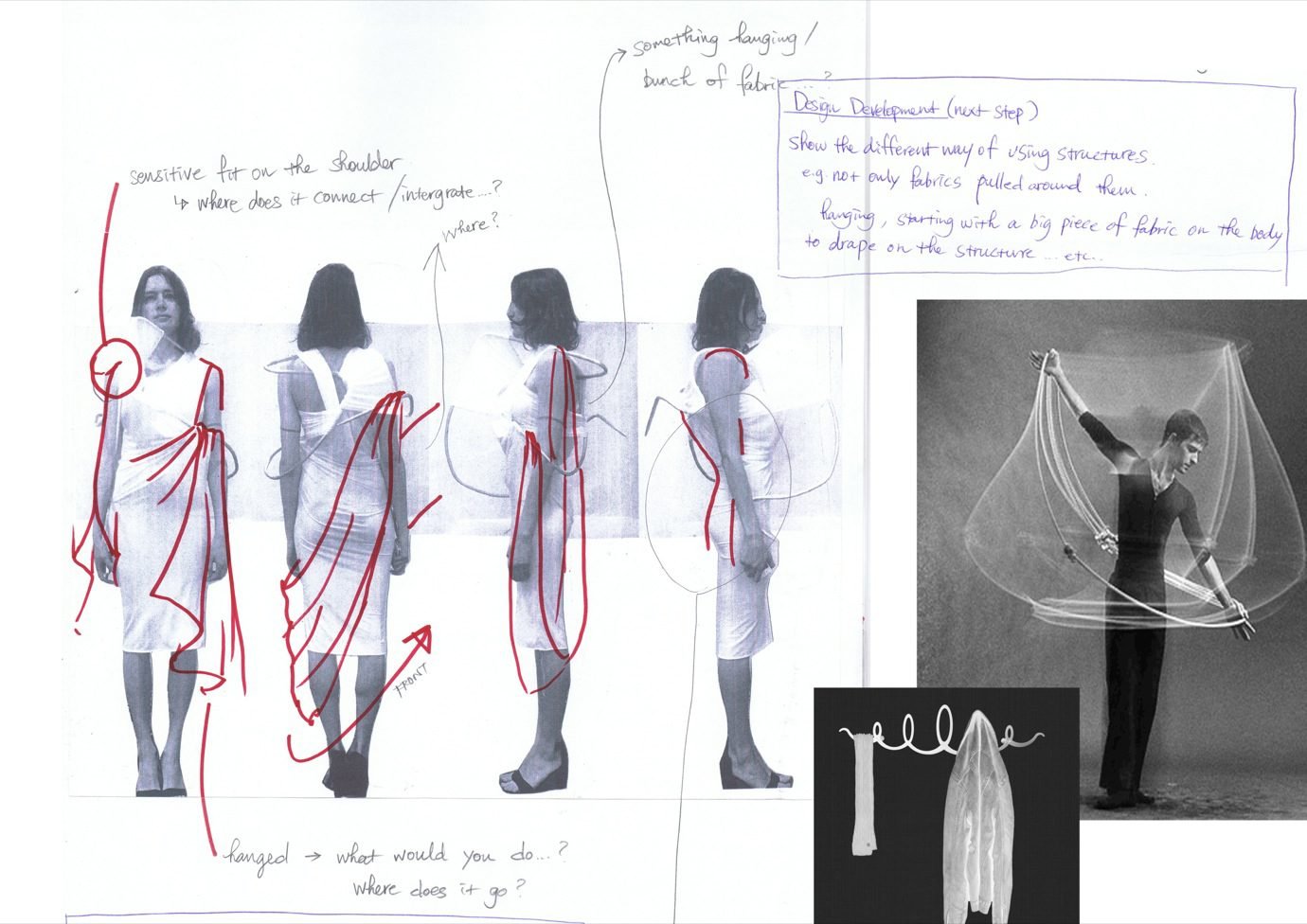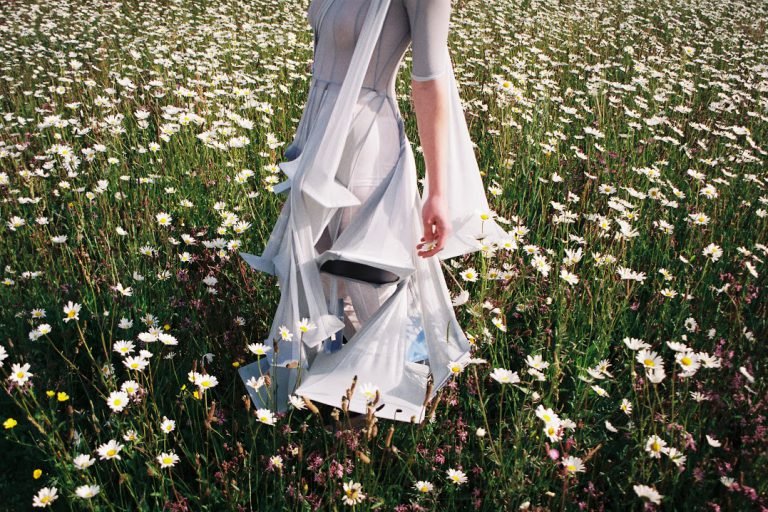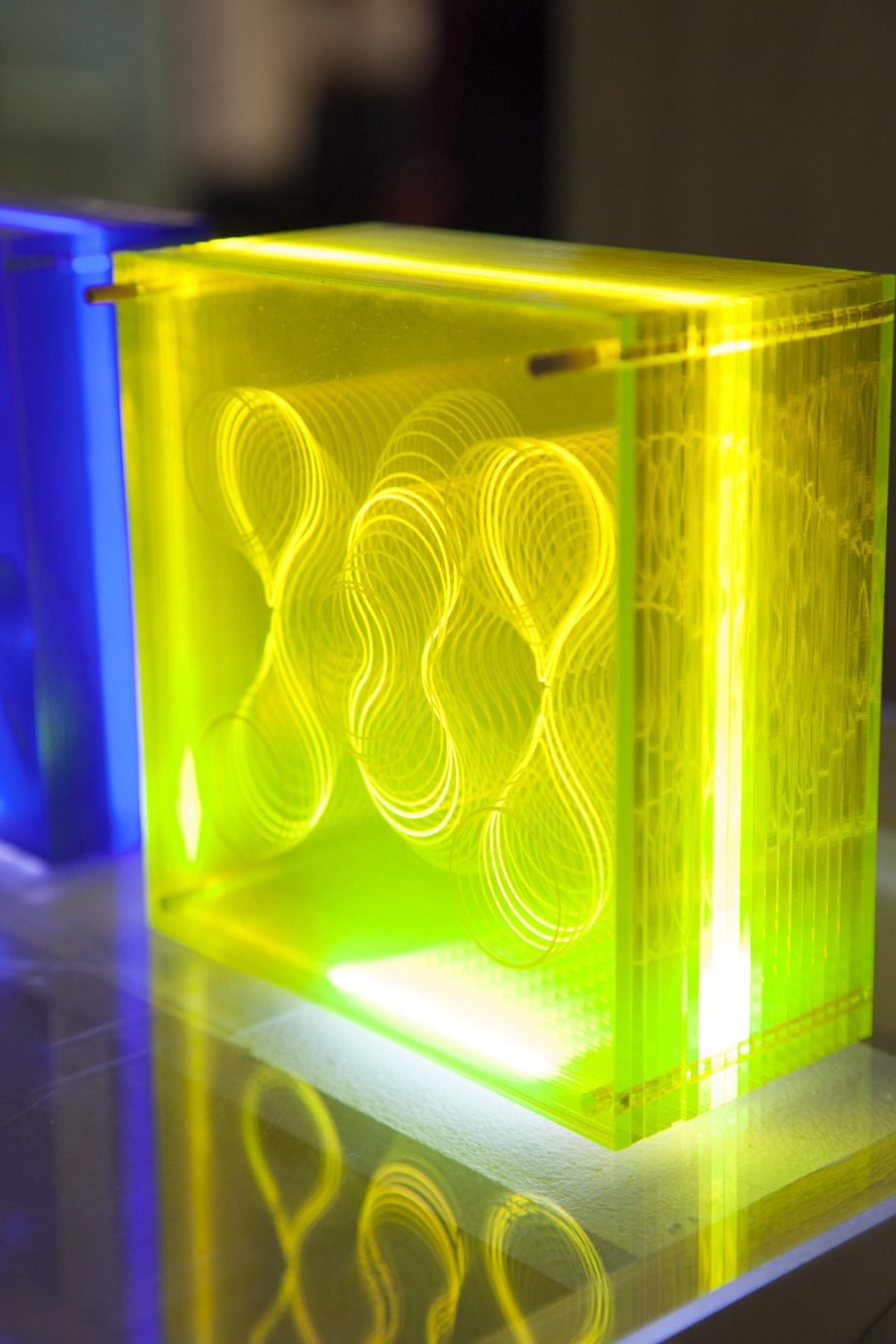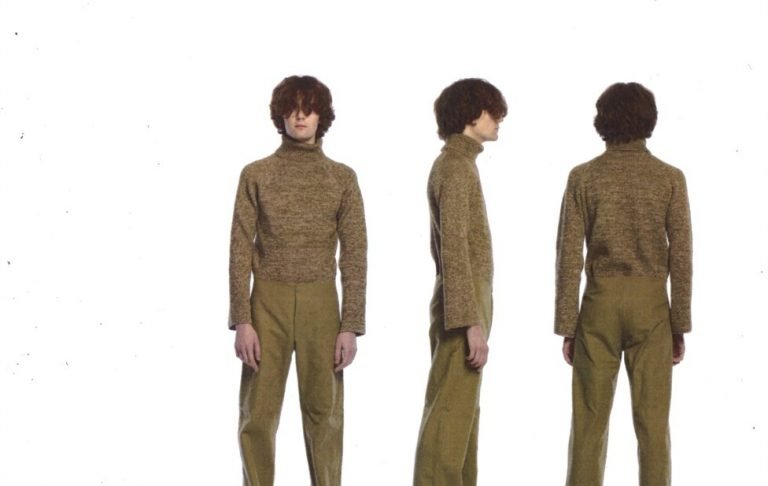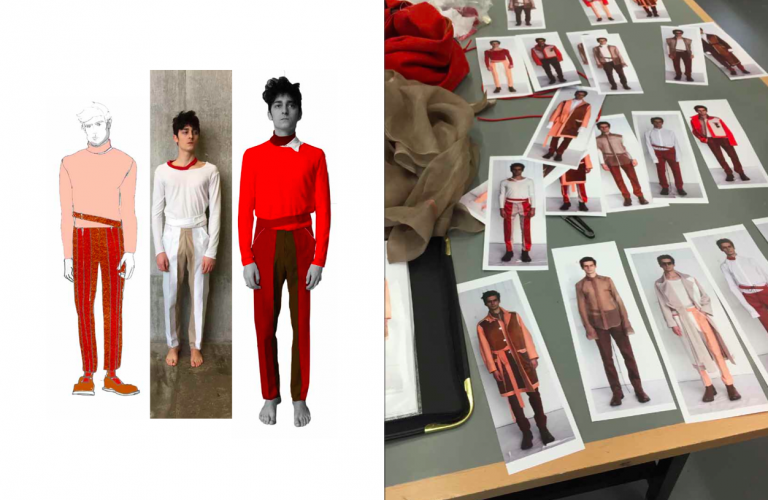“I THINK MY ROLE AS A DESIGNER IS TO FIND WAYS TO TRANSFER REALLY MASCULINE THINGS INTO FEMININITY.”
What’s the focus subject of the collection?
I was interested in layering fabrics, draping and creating flow in garments, as an important thing in my collection is fluidity and movement. I did research into abnormal feminine design as I am always inspired by unfeminine research. I think my role as a designer is to find ways to transfer really masculine things into femininity — I love to think about that transition. I always made little collages first, which looked like the garment, but it could’ve been a silhouette or details. Then I started to toile. I didn’t want to use colours that were too bright and kept my palette quite neutral with greyish pinks, and deep smoky olive green colours.
What kind of techniques did you explore in the collection?
I spent a lot of time playing with the weight of the fabric and exploring ways to make it lighter. I found a really thick crepe fabric and started to bond several fabrics, which made it heavier. Fabio [Piras, MA Fashion course director] suggested making it lighter, and I initially didn’t know how to do it, so I started creating lots of toiles in different fabrics, and I found a way of mixing single layers of fabric with bonding material where you basically can’t see the stitching on the garment. But, there is stitching inside, in between the layers. It’s my secret technique!
What was the most difficult challenge you experienced whilst creating the collection?
The first thing was speed, because compared to textiles students, womenswear students are really alone. We don’t have any helpers, whereas other textiles students have four to five people to help them; so in terms of speed we are so slow! (laughs)


